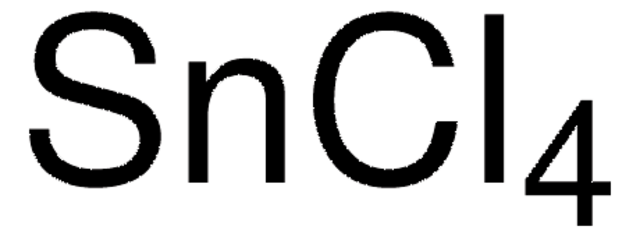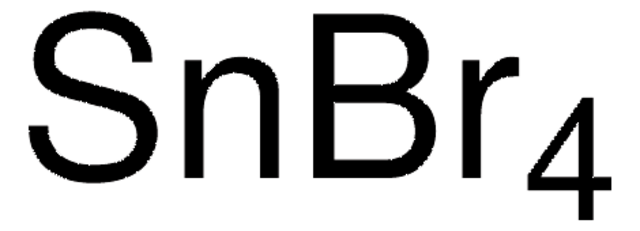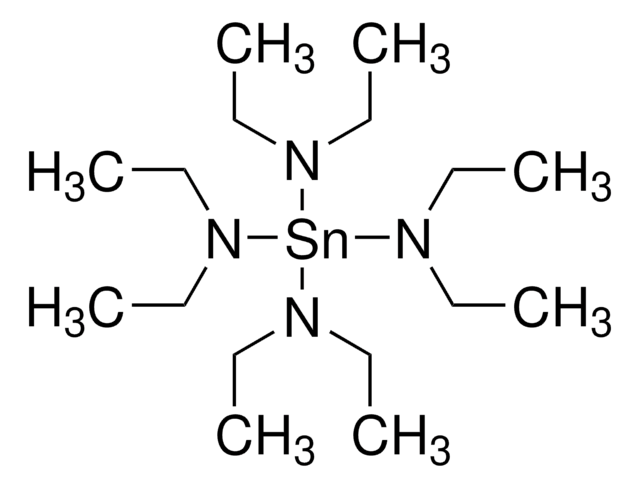345172
Tin(IV) acetate
Synonym(s):
Stannic Acetate, Tetraacetoxytin, Tin(4+) Diethanoate, Tin(4+) tetraacetate
About This Item
Recommended Products
form
solid
Quality Level
composition
Sn, 31.4-35.5% gravimetric
reaction suitability
core: tin
mp
232-233 °C (lit.)
SMILES string
CC(=O)O[Sn](OC(C)=O)(OC(C)=O)OC(C)=O
InChI
1S/4C2H4O2.Sn/c4*1-2(3)4;/h4*1H3,(H,3,4);/q;;;;+4/p-4
InChI key
YJGJRYWNNHUESM-UHFFFAOYSA-J
General description
Application
- As a reducing agent to synthesize silver nanoparticles for conductive inks for printed electronics.
- As a precursor to prepare tin oxide nanopowder for gas sensors.
Signal Word
Warning
Hazard Statements
Precautionary Statements
Hazard Classifications
Acute Tox. 4 Dermal - Acute Tox. 4 Inhalation - Acute Tox. 4 Oral
Storage Class Code
6.1C - Combustible acute toxic Cat.3 / toxic compounds or compounds which causing chronic effects
WGK
WGK 3
Flash Point(F)
Not applicable
Flash Point(C)
Not applicable
Personal Protective Equipment
Regulatory Listings
Regulatory Listings are mainly provided for chemical products. Only limited information can be provided here for non-chemical products. No entry means none of the components are listed. It is the user’s obligation to ensure the safe and legal use of the product.
PDSCL
Deleterious substance
ISHL Indicated Name
Substances Subject to be Indicated Names
ISHL Notified Names
Substances Subject to be Notified Names
JAN Code
345172-VAR:
345172-10G:4548173938134
345172-2G:4548173938141
345172-BULK:
Choose from one of the most recent versions:
Already Own This Product?
Find documentation for the products that you have recently purchased in the Document Library.
Customers Also Viewed
Our team of scientists has experience in all areas of research including Life Science, Material Science, Chemical Synthesis, Chromatography, Analytical and many others.
Contact Technical Service












